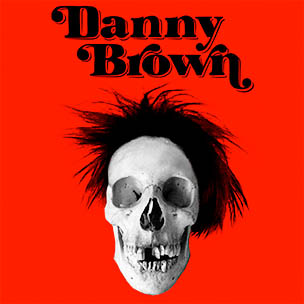Danny Brown, the rapper everyone loves to love, has continued his trajectory toward the top of the rap game with his newest album, Old.
Old might actually take the cake for best rap album of the year, surpassing Kanye West’s Yeezus, Chance The Rapper’s Acid Rap, Earl Sweatshirt’s Doris, and Meek Mill’s Dreamchasers 3. It is written with a classic narrative arc, telling the standard rapper rags to riches story. However, Brown approaches this story in a way that is totally different from those before him. Despite the riches he has acquired as of late, Brown remains haunted and traumatized by his nightmarish childhood, revealing an emotional side not often heard in rap songs.
The album primarily focuses on Brown’s past and his inability to forget or escape it. The narrative arc of the album begins with “Side A (Old).” Here, Brown discusses the struggle between artist and audience. The lyrics, “They want that old Danny Brown/ To bag up and sell a whole pound/ Might have to go and get my braids back/ Matter fact, bring them AK’s back,” suggest a general desire for Brown to return to his old style of rapping. However, doing this would connect Brown back to his disturbed, drug-fueled past, something that Brown explains throughout Old as being the last thing he wants.
The sharp, concrete imagery and stories presented in Old’s first song, such as turning on ovens to keep a cold Michigan home warm, continues throughout the entire album. However, the style in which these stories are told changes between tracks.
The narrative arc reaches its pinnacle at “Side B (Dope Song).” While the album begins with a typical rap sound (Brown remains calm and controlled), it transforms when “Side B (Dope Song)” comes on. The album slides seamlessly into party-rap mode at this point. It changes into fast, synth beats, moving more toward trap. This offers a strong juxtaposition to the classical rap style of the first half of the album.
The subject matter remains the same, however, as Brown reminisces about his drug-dealing past. With that said, he also suggests that he will no longer rap about this past when he says, “This is my last song/ Not my last dope song, but my last dope song.”
Brown tosses himself into an abyss of guilt in the second half of Old. He discusses his poor judgment as a father as well as his vicious, cyclical use of drugs. Brown even adds a heart-wrenching aspect to the album by describing how he feels helpless against the temptations that surround him. Brown describes understanding the negative consequences of his actions without being able to stop them from happening in the second half of Old. This is something that appears in “Gremlins,” when Brown talks about himself in the third person, dissociating himself from his past actions.
Ultimately, it is the sound as well as the meaning of Danny Brown’s Old that make it one of the best albums of the year, if not the best. Not only does the sound behind Brown change from classic rap to hard, psychedelic-electronic beats, but Brown himself is able to change his sound in order to make it all work. His cadence and delivery evolve throughout the album alongside the music that supports him.
Brown is able to use his past in a way that rappers haven’t done before. He talks about the horrors of being a drug addict and dealer. He talks about the struggle of growing up poor in Detroit, and yet does it in a way that doesn’t glorify it, atypical in comparison with most rap songs. In fact, Brown suggests that he is doing everything he can to escape this past and turn his spiraling life around. All of these aspects come together to make Old one of the new greats.

Comments are closed